Rome, water returns to the Baths of Caracalla after centuries. Inauguration of Hannes Peer's Mirror.
Water returns to the Baths of Caracalla. After 1,800 years since its construction, the complex is returning to its central and founding element thanks to a far-reaching architectural, social and cultural intervention, the first piece of which is the Mirror of Water. The project of the Special Superintendence of Rome, directed by Daniela Porro, is the brainchild of Mirella Serlorenzi, who, upon arriving at the direction of the Baths of Caracalla, promoted a project of extensive renovation of the complex, giving relevance to the thermal element. The Mirror, an architectural installation intended to provide the suggestion of the space in ancient times, was conceived and designed by architect Hannes Peer and realized in collaboration with architect Paolo Bornello.
The area where the Baths of Caracalla are located has always been characterized by the presence of water: even before its urbanization it was a rather wild valley full of streams, which are still present in the underground. When completed in the early 3rd century AD, thebath complex featured fountains and nymphaeums in the gardens, but especially inside were the large pools of hot, lukewarm, and cold water and a gigantic pool, the Natatio, as well as several sauna rooms, which encouraged the presence of water vapor. The design, a large architectural line (42 x 32 meters) with overflow water on three sides, is radical and contemporary but at the same time harmonizes with the ancient Baths complex. The simple, rectangular shape deliberately suggests the form of the Natatio: the black-colored pool lining material(Liner) looks modern but maintains as its main intent to frame, mirror and replicate the monument to make it the absolute protagonist, highlighting its majestic remains. Shape and color of the Mirror are determined primarily by its functionality, a novelty also in terms of how it can be accessed: visitors, the Superintendency promises, will be at the center of their experience, interacting with the Baths of Caracalla, instead of just enjoying it as visitors. The Water Mirror, which rises only 10 centimeters from the ground, in fact has a function that the institute calls “multivalent”: it is a kind of theater of water and on water, equipped with a stage intended for a series of performance and cultural activities, in a symbiosis of art and functionality. The stage, black in color, like the rest of the pool and with a minimal difference in height (about 5 centimeters) compared to the Water Mirror, thanks to its large size, allows the possibility of presenting theatrical, dance or classical music performances, as well as lectures, meetings and lectio magistralis. On the backdrop of the Mirror, 20 fully submerged water jets, accompanied by as many reflectors, allow various water and light games and movements to be performed. The stage is bordered on three sides with a linear LED with warm light, and, only on the long side, with a water atomization system capable of producing a cloud projected toward the center of the pool, restoring the suggestion of the steam of heated environments.
The inauguration of the Mirror of Water as a performance venue will be the Roman premiere of the choreography curated by Ater Balleto of Rhapsody in blue, on the centenary of the creation of this score by George Gershwin.
The project develops the desire of the Special Superintendency of Rome to restore and enhance the monumental complex and gardens of the Baths of Caracalla: a “revolution,” the Superintendency says, that begins with the Water Mirror and will go on with innovative interventions on the entire extension of the archaeological site to make the Severan facility at the forefront of cultural enjoyment in the Capital.
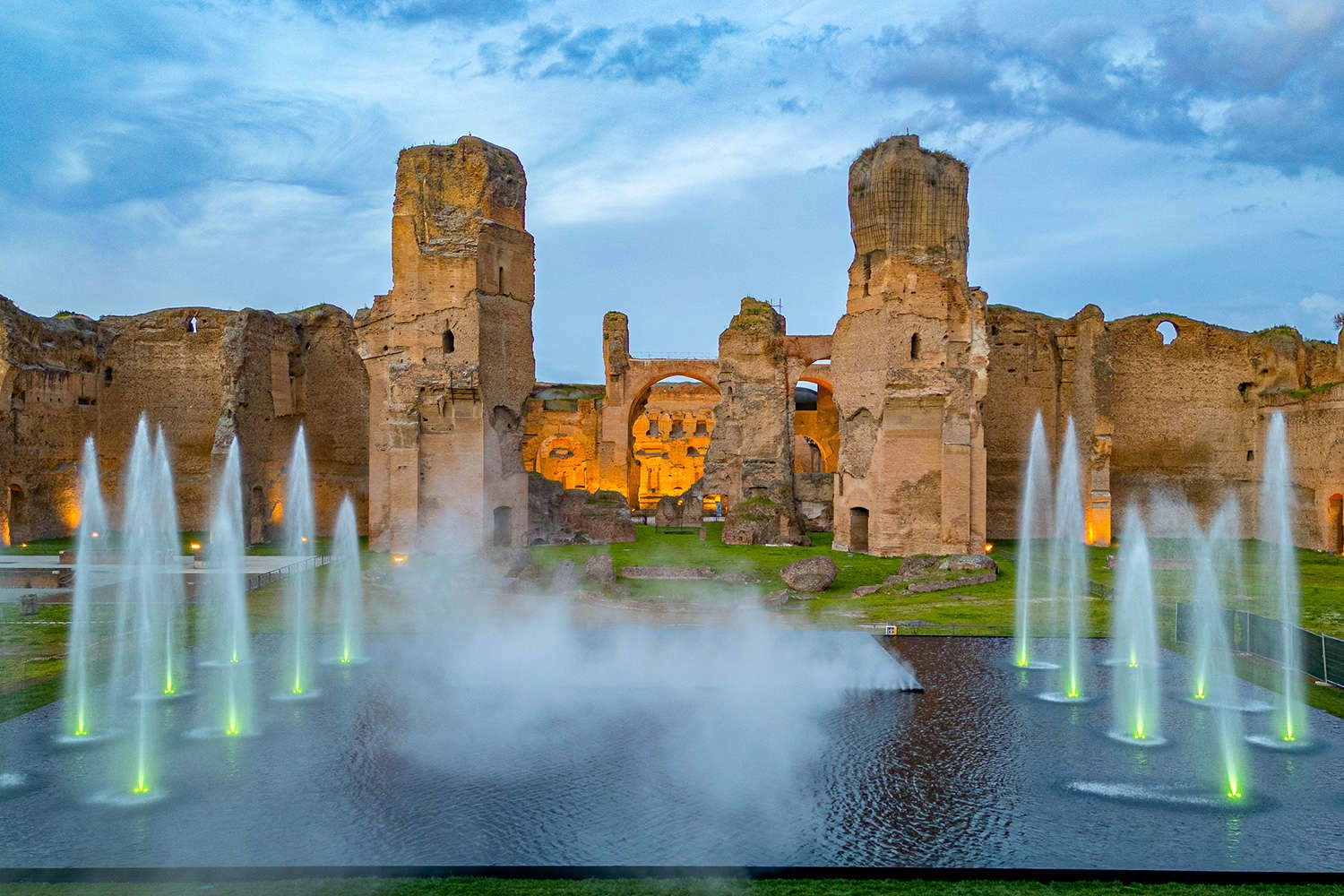
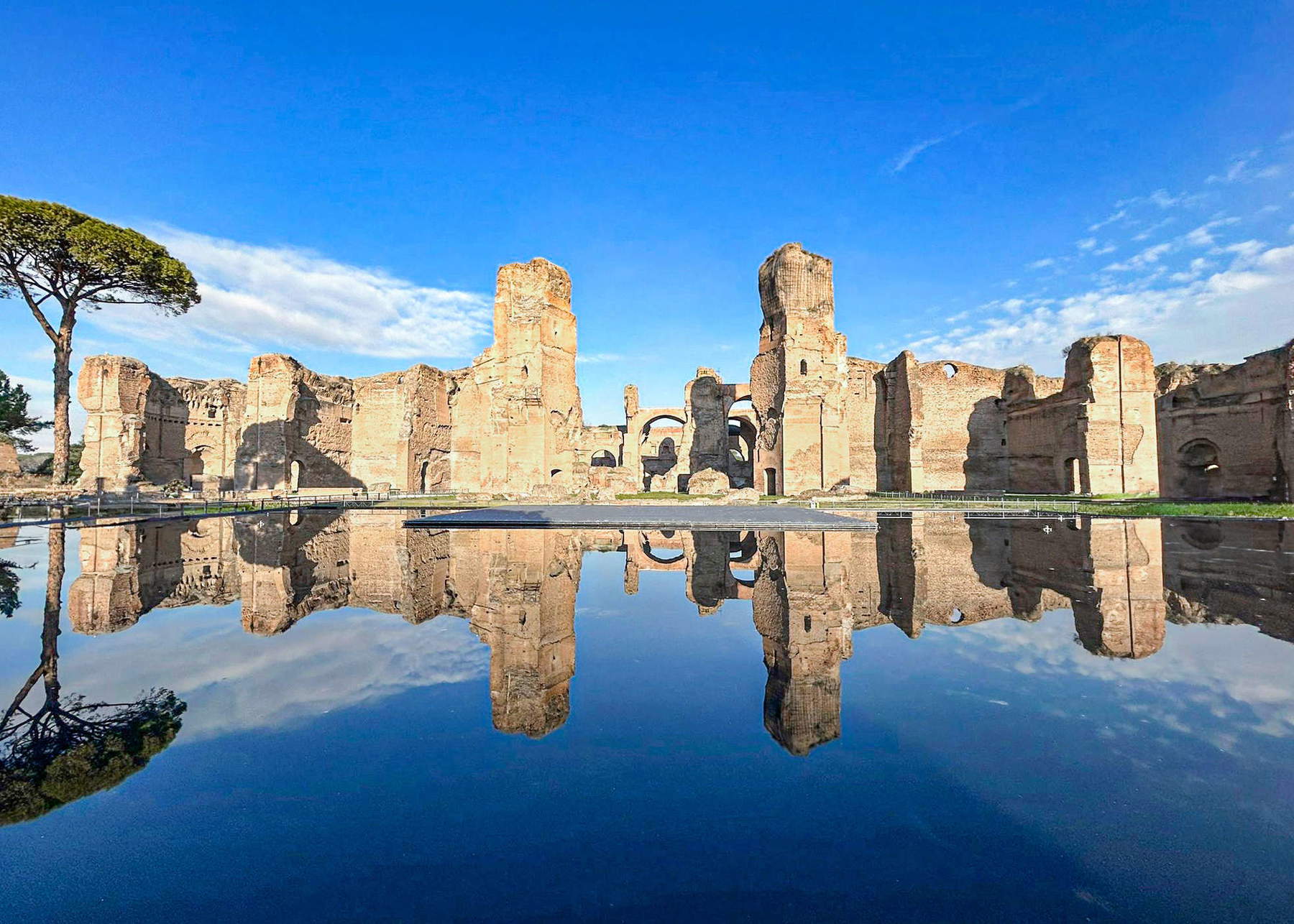
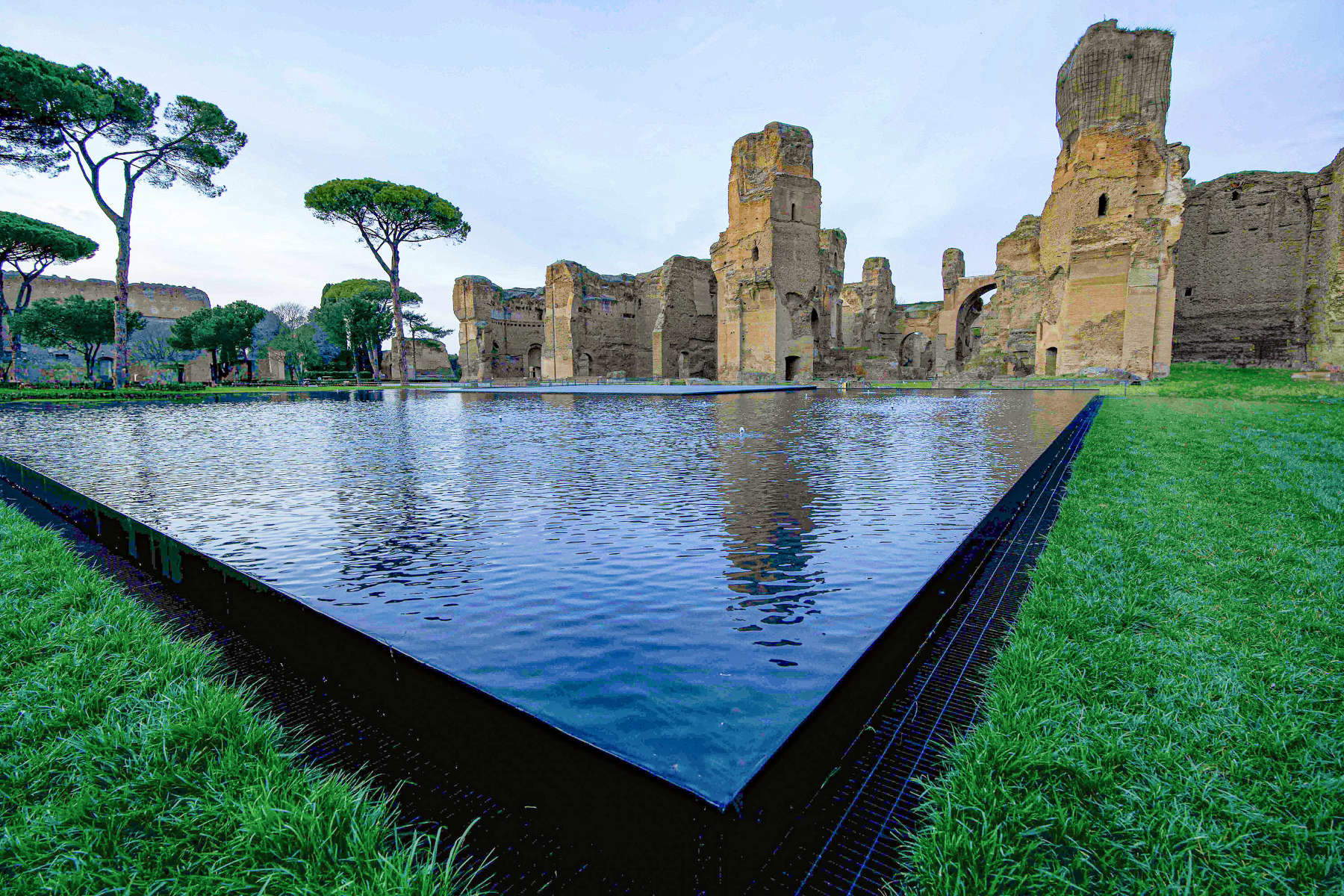
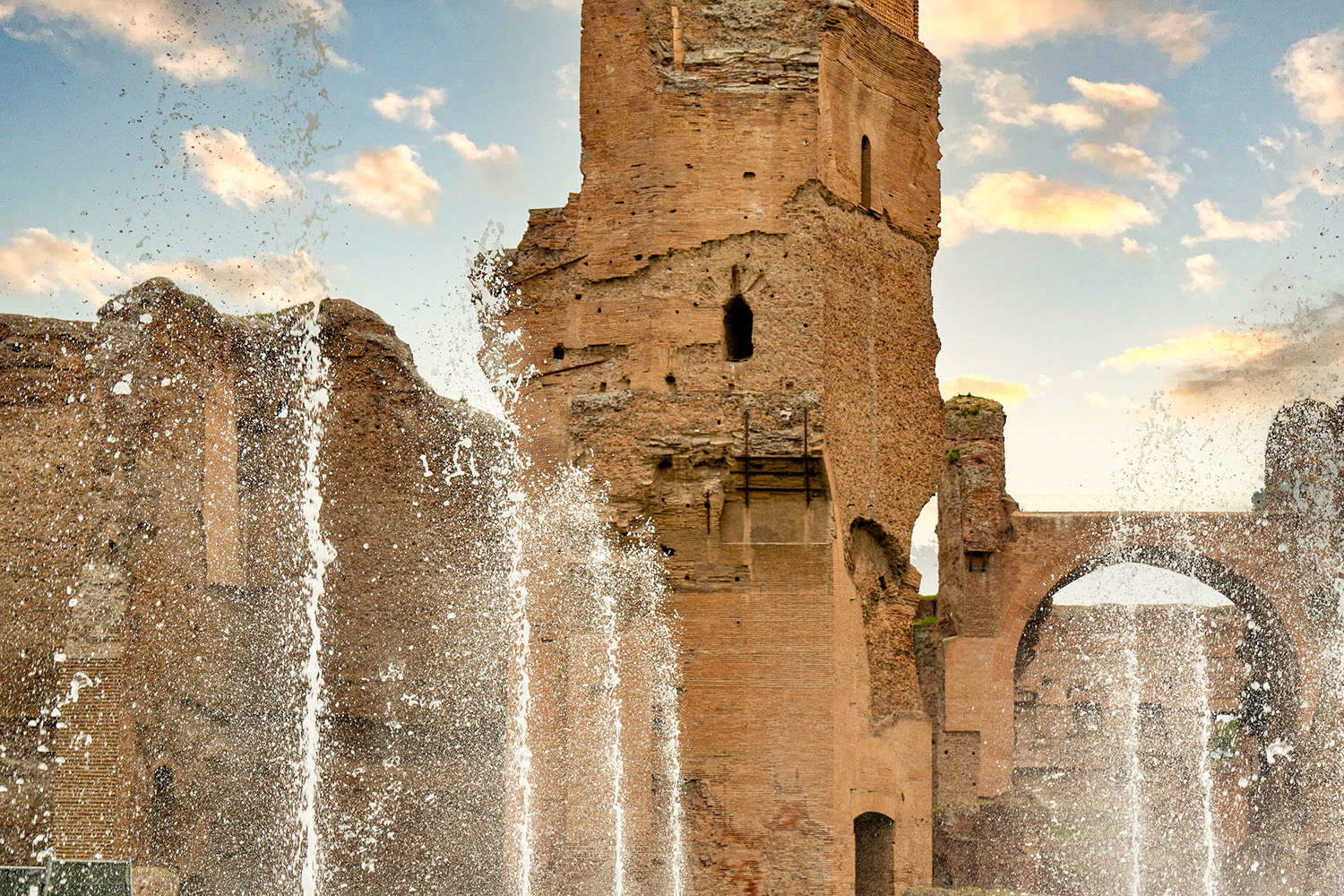
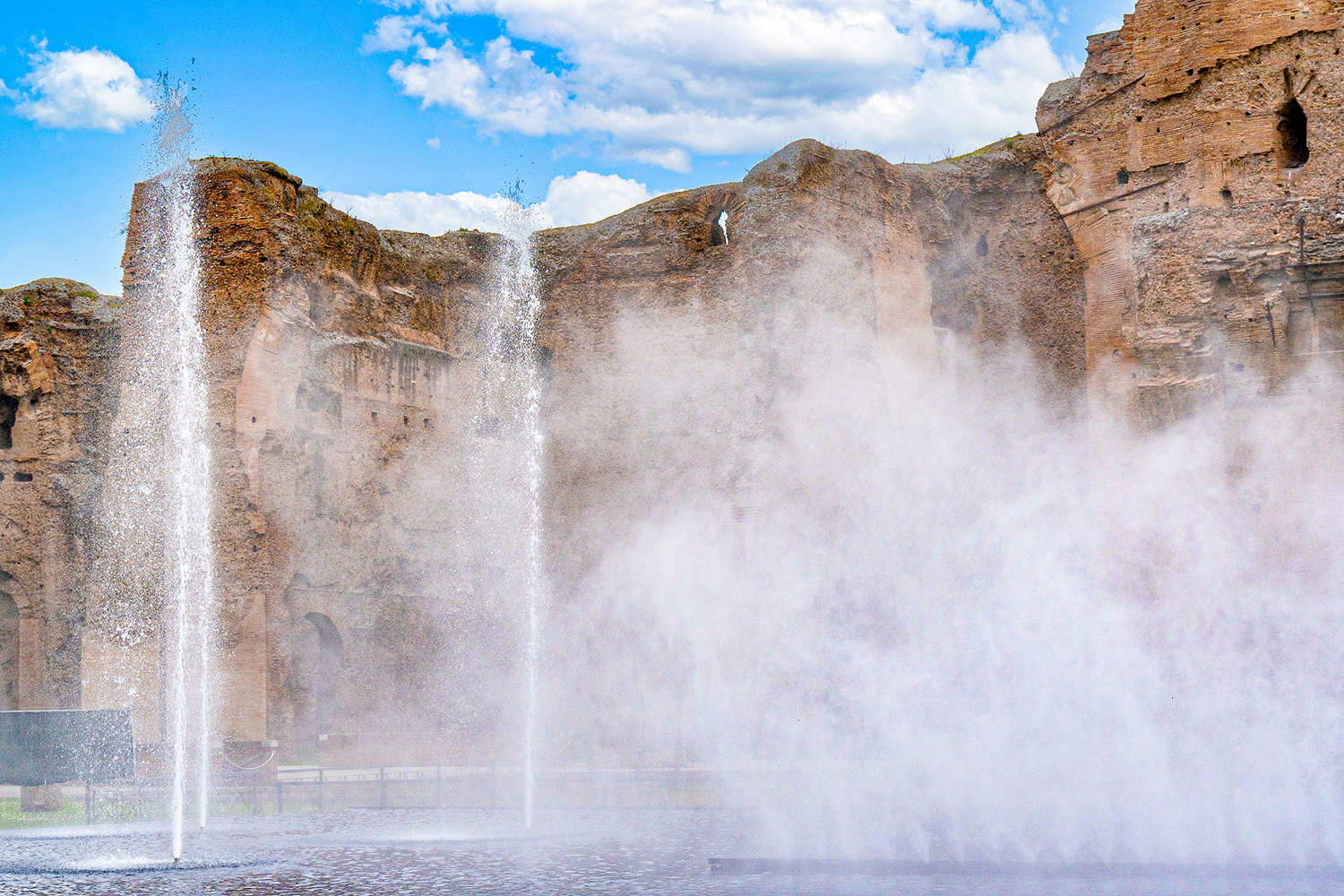
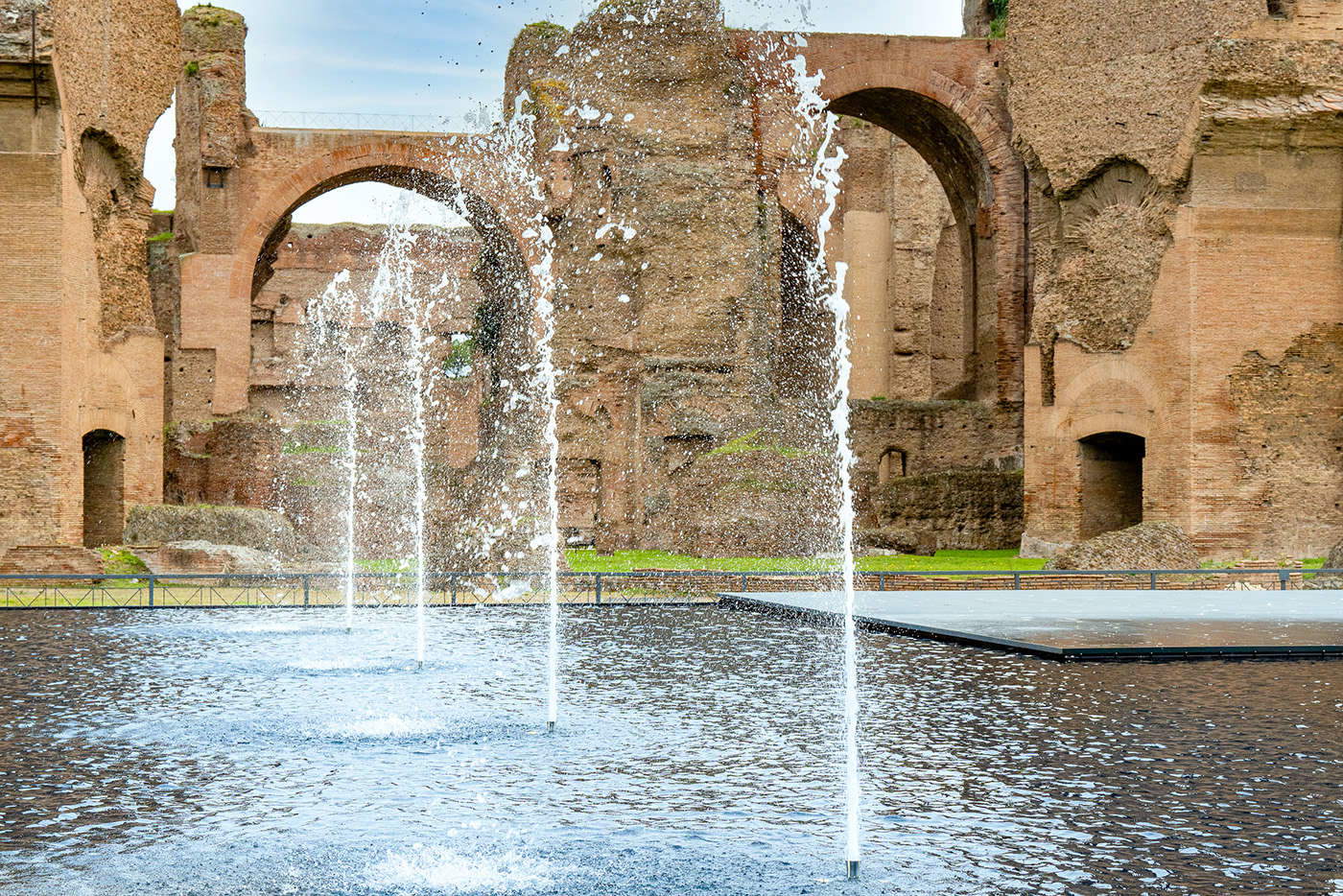
Statements
“With this spectacular Mirror the Superintendence wishes to trigger a process of renewal and opening to the city in one of the most important archaeological sites in the capital,” says Daniela Porro, Special Superintendent of Rome. “An intervention of contemporary architecture that harmonizes with the ancient one, to consolidate the role of the Baths of Caracalla as a center promoter of culture and art. The return of the water is not only a wonder for its own sake, a joy for the eyes and the spirit, but is intended to be a concrete symbol of reconnection with the ancient.”
“The creation of the pool of water,” explains Mirella Serlorenzi, director of the Baths of Caracalla, “is the first element of an integral project aimed at restoring the perception of these places as they were in antiquity. Water, an element absent for more than a thousand years, returns in a decisive but respectful way to the ruins: in a play of mirrors, the natatio emerges from the body of the baths and stands axially in the gardens, duplicating the imposing calidarium. A contemporary sign, as contemporary is our understanding of the ruins, that creates a kind of conceptual metaverse and reactivates through water games and misting the memory of the ancient function of the Baths of Caracalla.”
“At the heart of the ancient Baths of Caracalla, the Water Mirror offers visitors an immersive and immersive experience,” stresses Hannes Peer, architect and designer, “over an area of more than 1,000 square meters, respecting the grandeur of the thermal complex. Architecturally integrated with the ancient monument, the Mirror embodies the philosophical concepts of both presence, with water itself (Dasein), and material absence, through reflection (Nichtdasein), reverberating the ideas of Martin Heidegger. It is an invitation to contemplation and also a dynamic setting for cultural initiatives, marking the first step in a new phase aimed at preserving the archaeological legacy, casting its gaze into the future.”
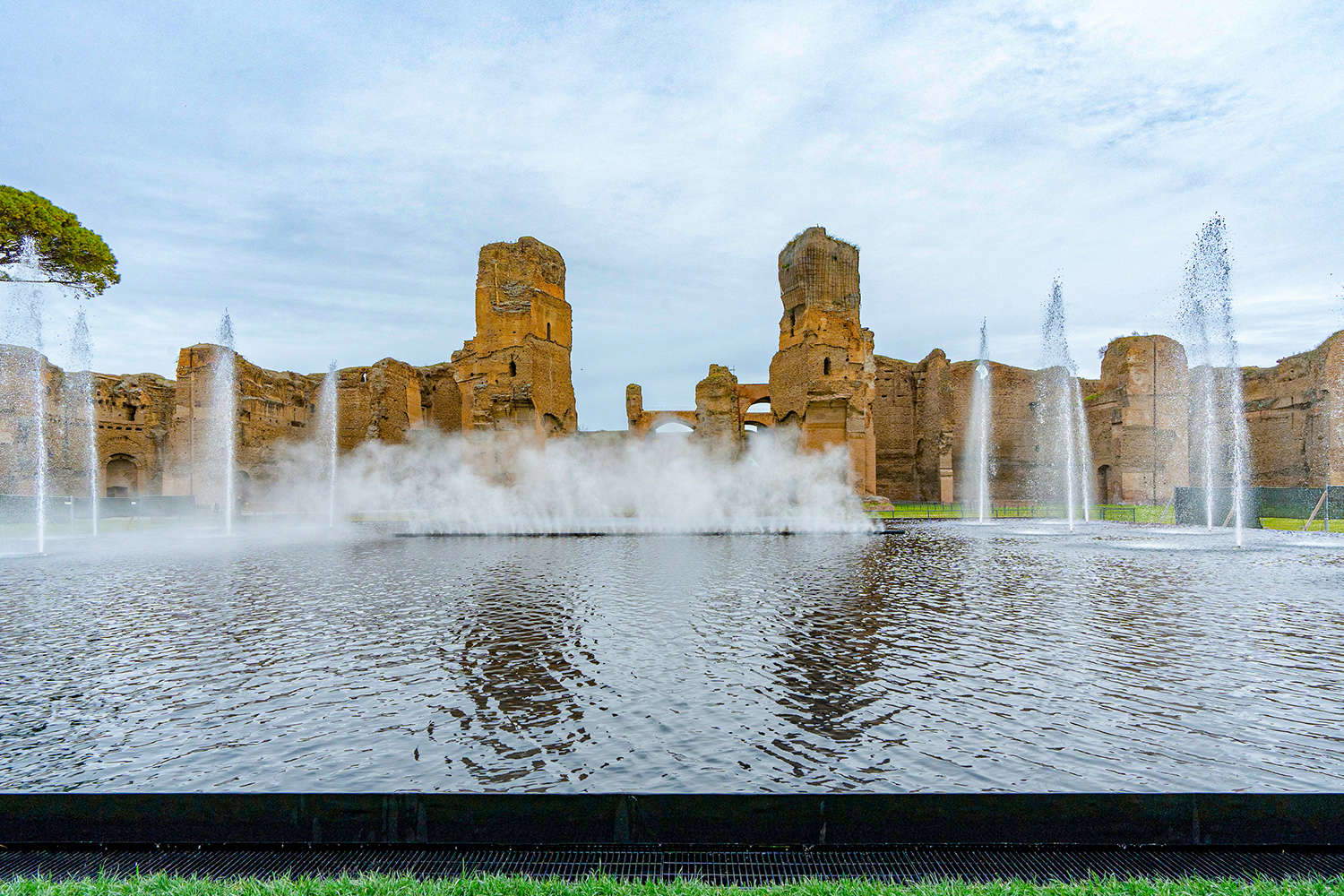

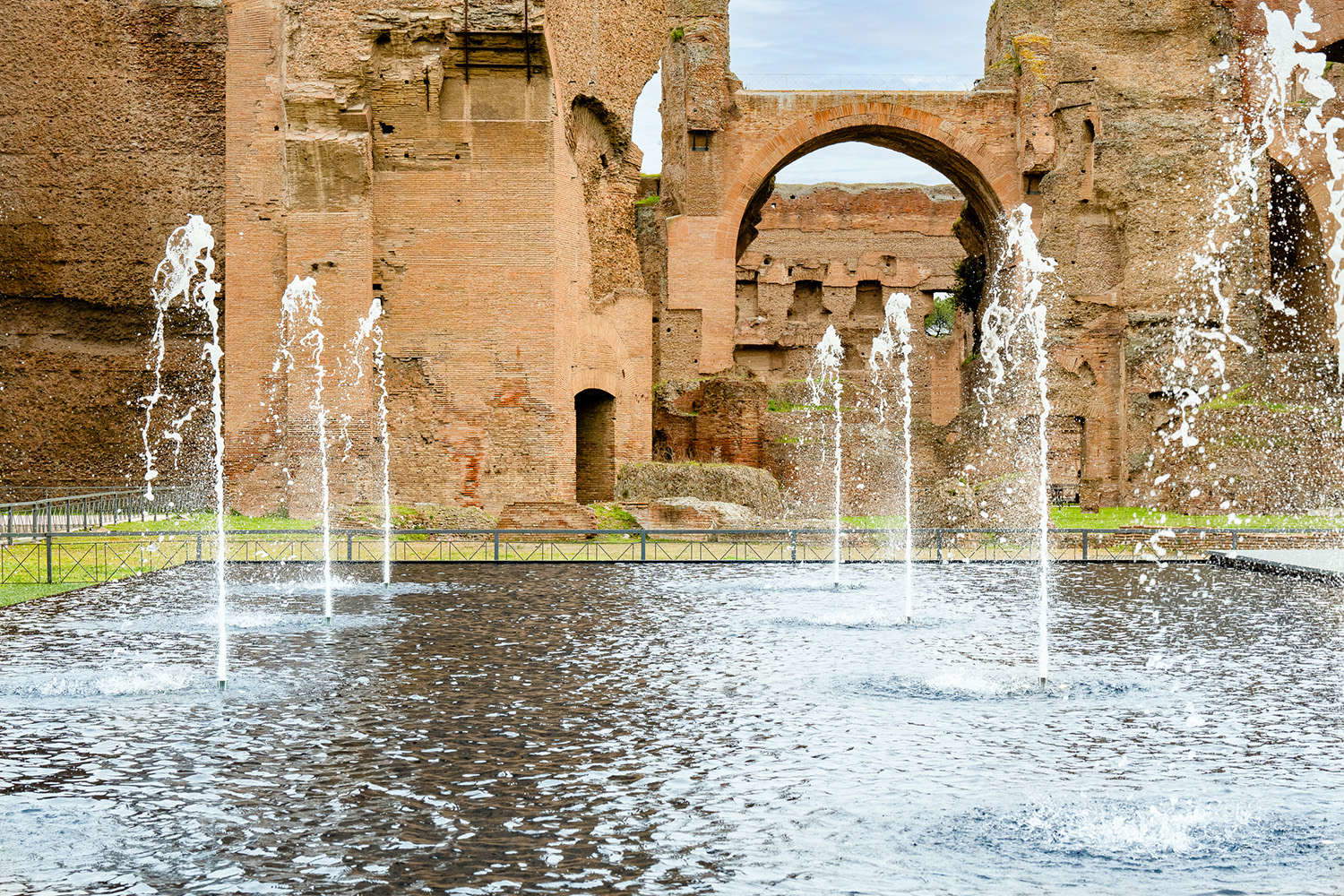
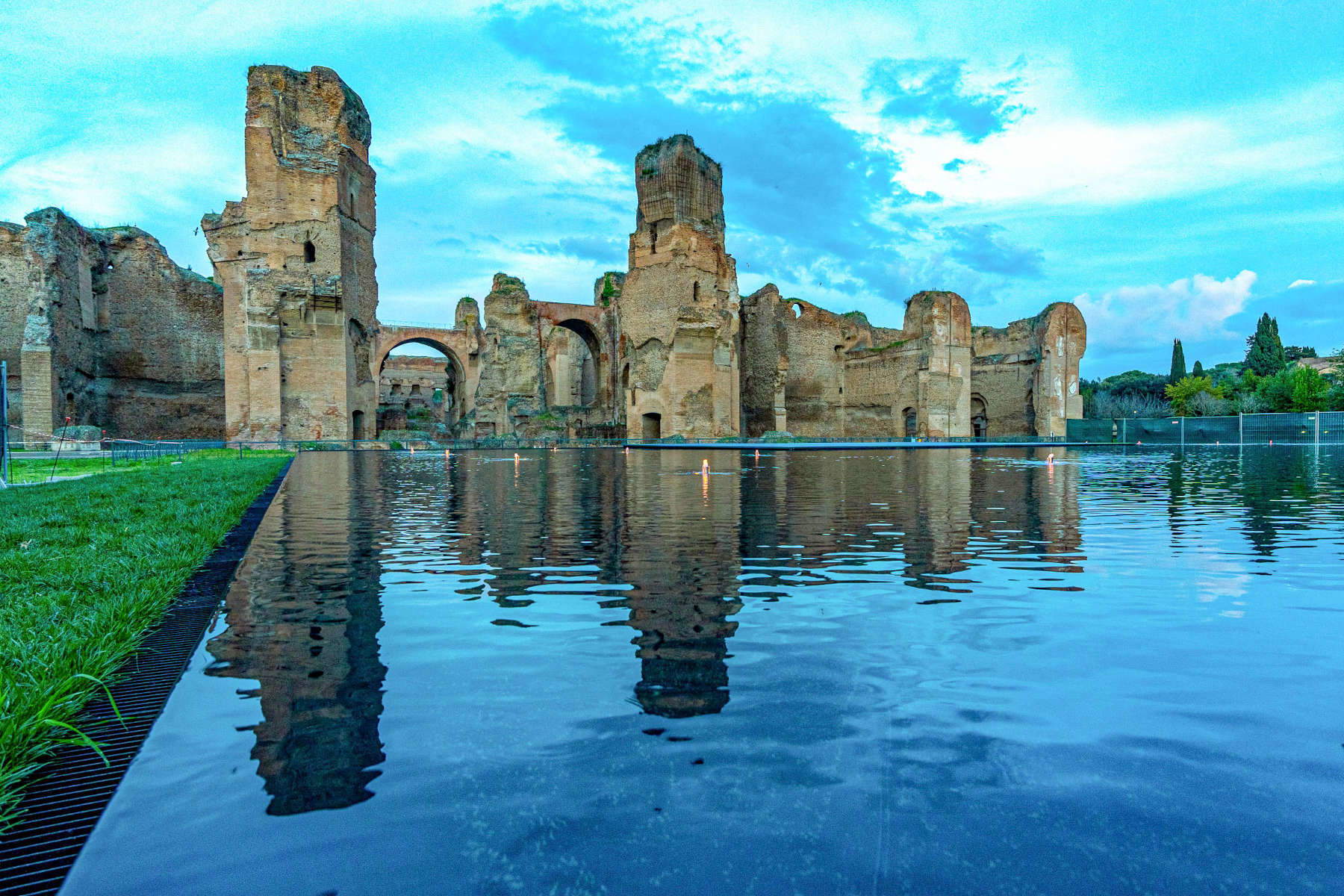
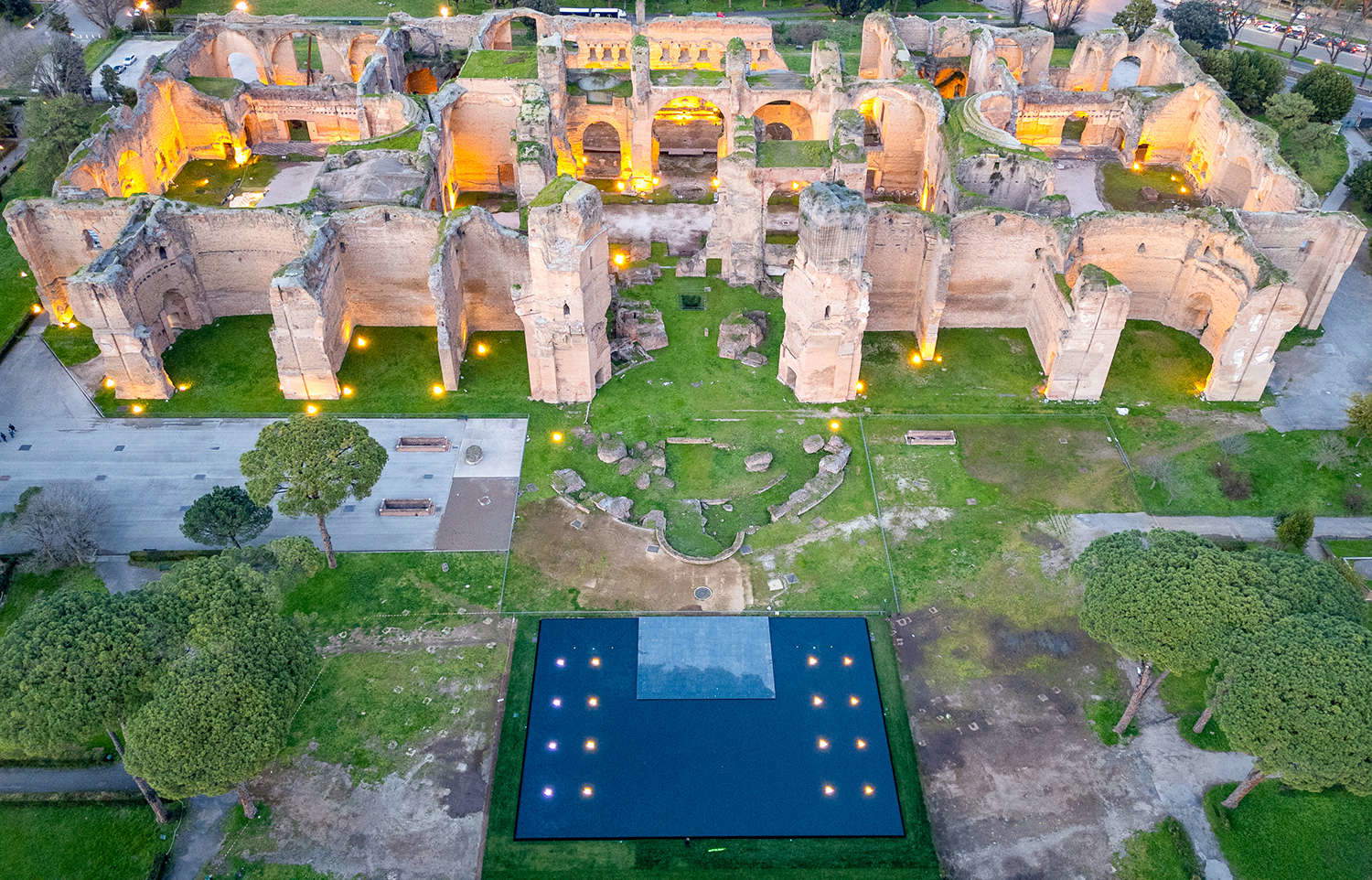
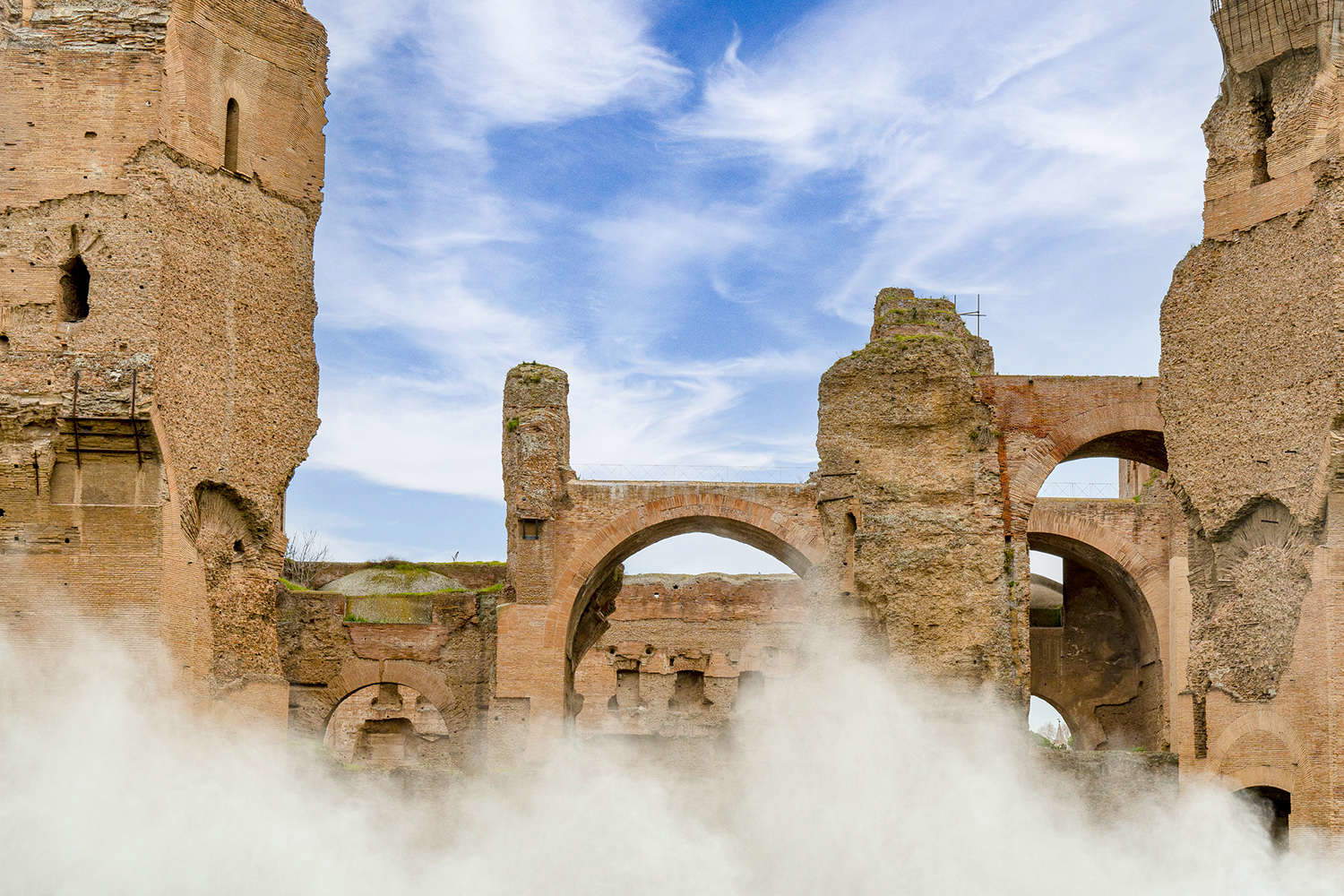
How the Baths of Caracalla will change in the future.
In the coming years, the Baths of Caracalla will become an archaeological site redesigned in a contemporary key: a “Revolution under the banner of the best practices of conservation, restoration and enhancement that will make the Severan baths facility at the forefront of cultural enjoyment in the Capital,” the Superintendence of Cultural Heritage lets us know. The master plan carried out under the supervision of Daniela Porro, Special Superintendent of Rome, supervised by Mirella Serlorenzi, director of the monument, in collaboration with architect Hannes Peer, Maurizio Pinotti technical director Terme di Caracalla, architect Paolo Bornello, architect Andrea Grandi and landscape architect Giuseppe Provasi, will draw on funding from the National Recovery and Resilience Plan (Pnrr), funds from the Special Superintendency of Rome and the Ministry of Culture. The “Caracalla Revolution,” as the Superintendency calls it, will be articulated over a long period of several years, will follow five guidelines and one unwavering principle: the perception, understanding, and enjoyment of the monument as it was in ancient times through a presence-absence play of which the Mirror of Water represents the first step.
The Baths of Caracalla lost their thermal function around the 5th century: the return of water, which had been absent from the site for about 1,500 years, is the first guideline and will play an important role in the future fruition of Rome’s imperial thermal facility best preserved in its original structure, thanks to the creation of fountains and water features capable of enhancing the symmetries and correspondences of the ancient monumental architecture.
The second line of intervention will be that of connection with the city: the entrances to the monument will be reworked, creating a closer relationship between the archaeological site and the urban fabric. In ancient times the Baths faced directly onto the great road that led from the present Porta San Sebastiano to the Circus Maximus and the Palatine, with a front of Tabernæ alternating with stairways leading up to the facility.
The new design will philologically reproduce the ancient entrance to the Baths through the central portico where the ticket office will be located, surrounded by two green areas: a meditative park and an active and dynamic one. It is precisely plants that will be the focus of the third guideline through the evocation of spaces lost through greenery. In ancient times, parks connected to imperial public structures were places of otium and well-being open to social activities, meetings, and readings. In this key, the redefinition of the garden of the Baths of Caracalla has been conceived as a large open space, articulated in thematic areas. Moreover, it will be the ephemeral greenery that will suggest to the visitor those ancient architectures that are today incomplete. All plants will also be chosen on the basis of their hardiness and reduced need for water and maintenance. A totally eco-sustainable Botanical Horto will also be created, offering a flowering linked to the succession of the seasons and an ever-changing olfactory and visual experience, thanks to the alternation of the various flowers. The fourth area of action will be dedicated to the creation of a new service center: the entrance to the spa will be organized as a true visitor welcome. In addition to the ticket office, orientation areas, rest areas, access to the theme parks, children’s spaces, library, and refreshment point. The impressive architecture of the Baths of Caracalla will be the focus of the fifth and fundamental line of intervention: a complex and thorough maintenance and restoration of all masonry structures. In addition to the conservation of the ancient masonry, these interventions will be aimed at expanding the tour route, articulating it thematically, and adding new covered spaces for cultural, exhibition, educational and social activities. The various projects scanned over the immense expanse of the site also have two other goals: complete accessibility and eco-sustainability both in terms of the materials used and their operation and maintenance. The innovative relationship with the visitor and the transformation of the relationship with the city, the greenery as a qualifying element, the restoration and expansion of the visiting routes, covered spaces for cultural activities, contemporary architecture in the service of the ancient, the return of water, eco-sustainability, and the creation of a place that invites one to stop for a long time, to return: the Caracalla Revolution wants to give Rome a different way of conceiving, enjoying, valuing cultural places.
The plan scheme of the complex is that of the “great imperial baths”: not only a building for bathing but also a place for walking, studying, sports and body care. The central block, the one intended properly for the baths, is arranged on a single axis along which open in sequence caldarium, tepidarium, frigidarium and natatio (the latter the size of an Olympic-size swimming pool); at the sides, arranged symmetrically and doubled, are the two gymnasiums and the locker rooms. Instead, located in the enclosure surrounding the central area were the cisterns and the two symmetrical libraries, to the south, two large exedras enclosing warm and gathering rooms, to the west and east, the main entrances and the tabernae inserted in the perimeter space, to the north. The basements were the hub of life in the complex, the place where hundreds of slaves and skilled laborers worked to operate the ingenious technological machine of the baths. Preserved for about two kilometers, the dungeons were a maze of large carriageable tunnels (6 meters high by 6 meters wide approximately), where all the lumber stores, a mill, the mithraeum, the heating system (the furnaces and boilers) but also the water system were located, a dense network of small tunnels used to lay the lead pipes and to manage the adduction and distribution of water. The largest tunnels, the heating tunnels, ran under almost the entire building and were lit by skylights, which also allowed air circulation to prevent the wood stored there from rotting. Their large size was related to the need for horse-drawn carts loaded with wood to pass through them.
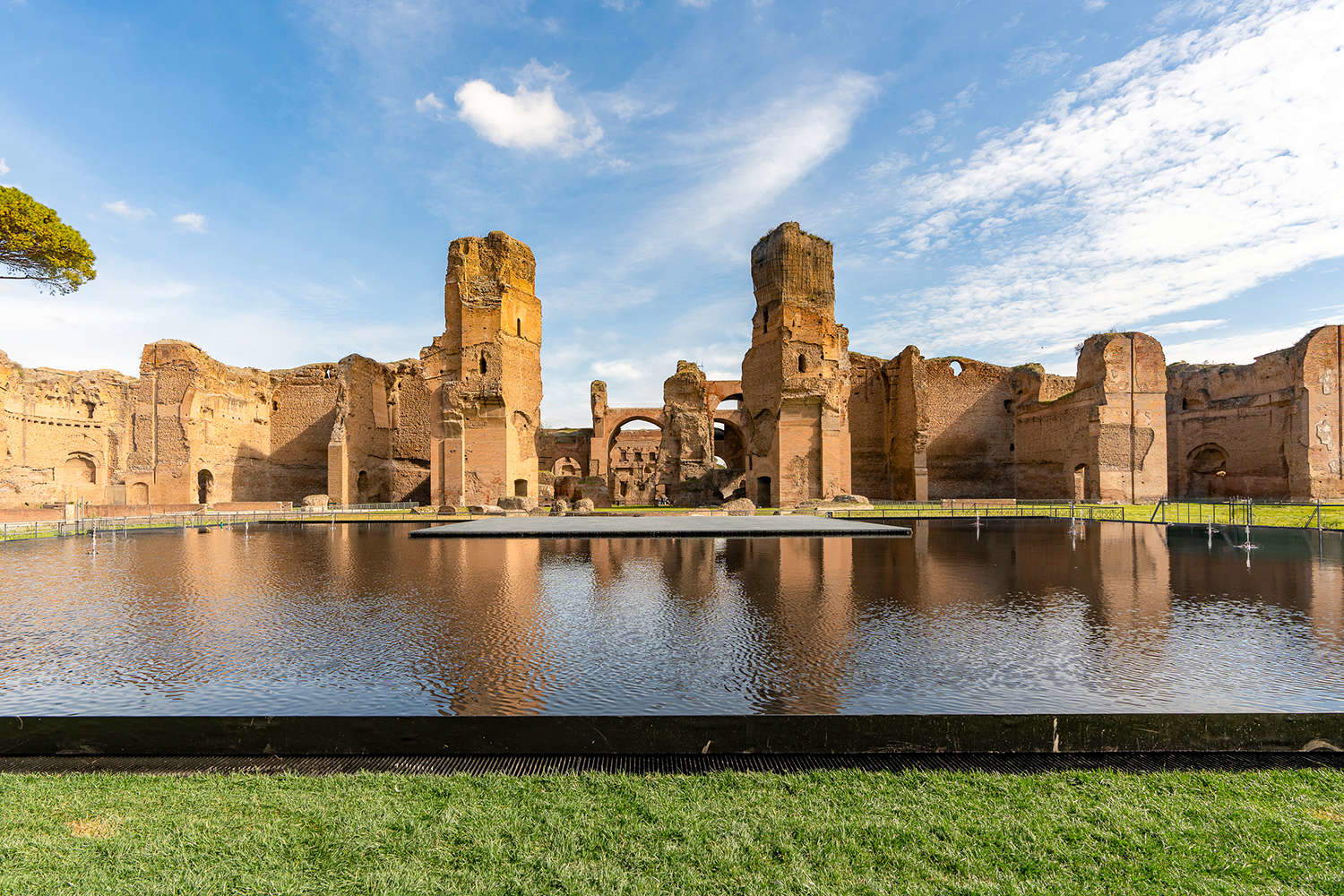
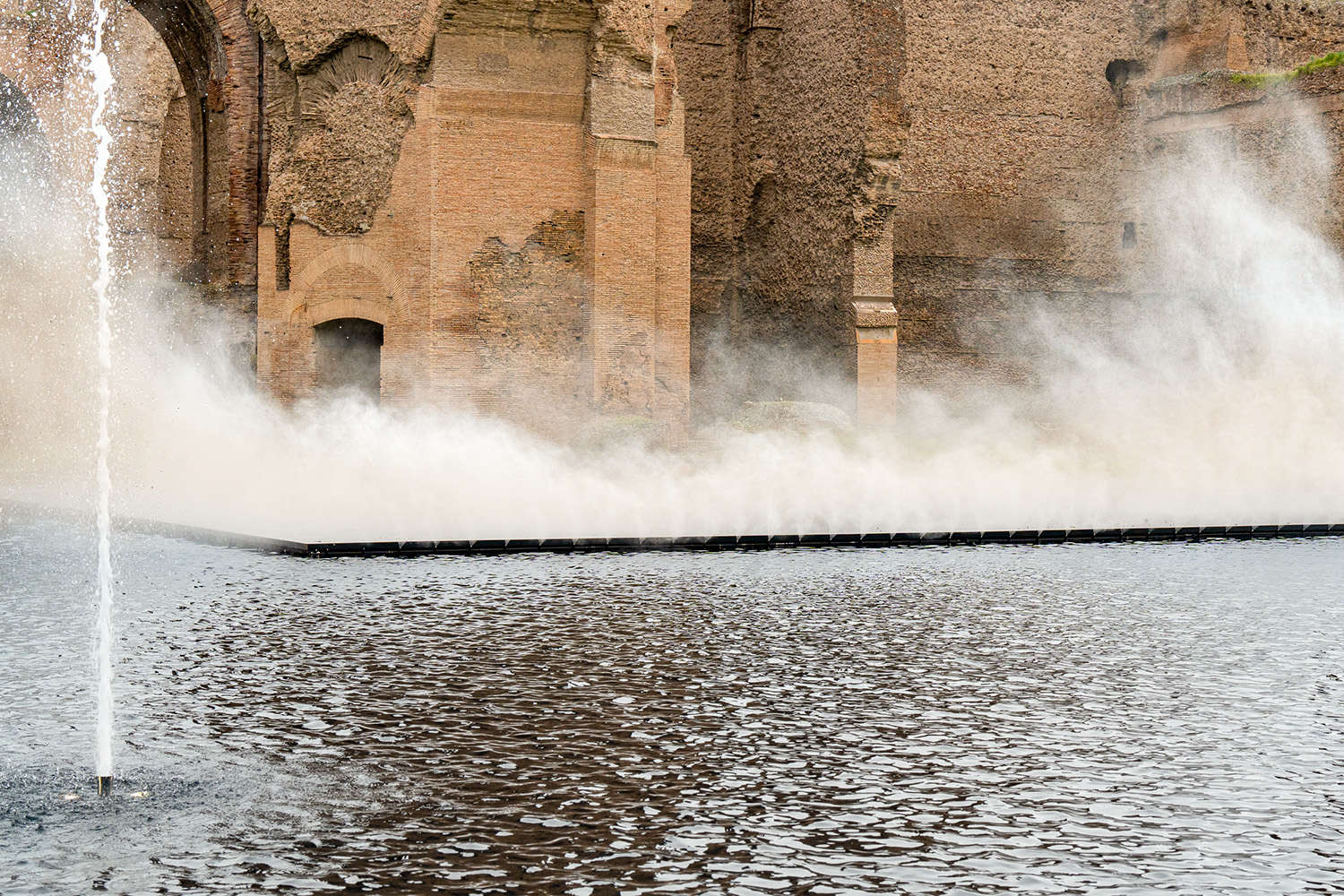
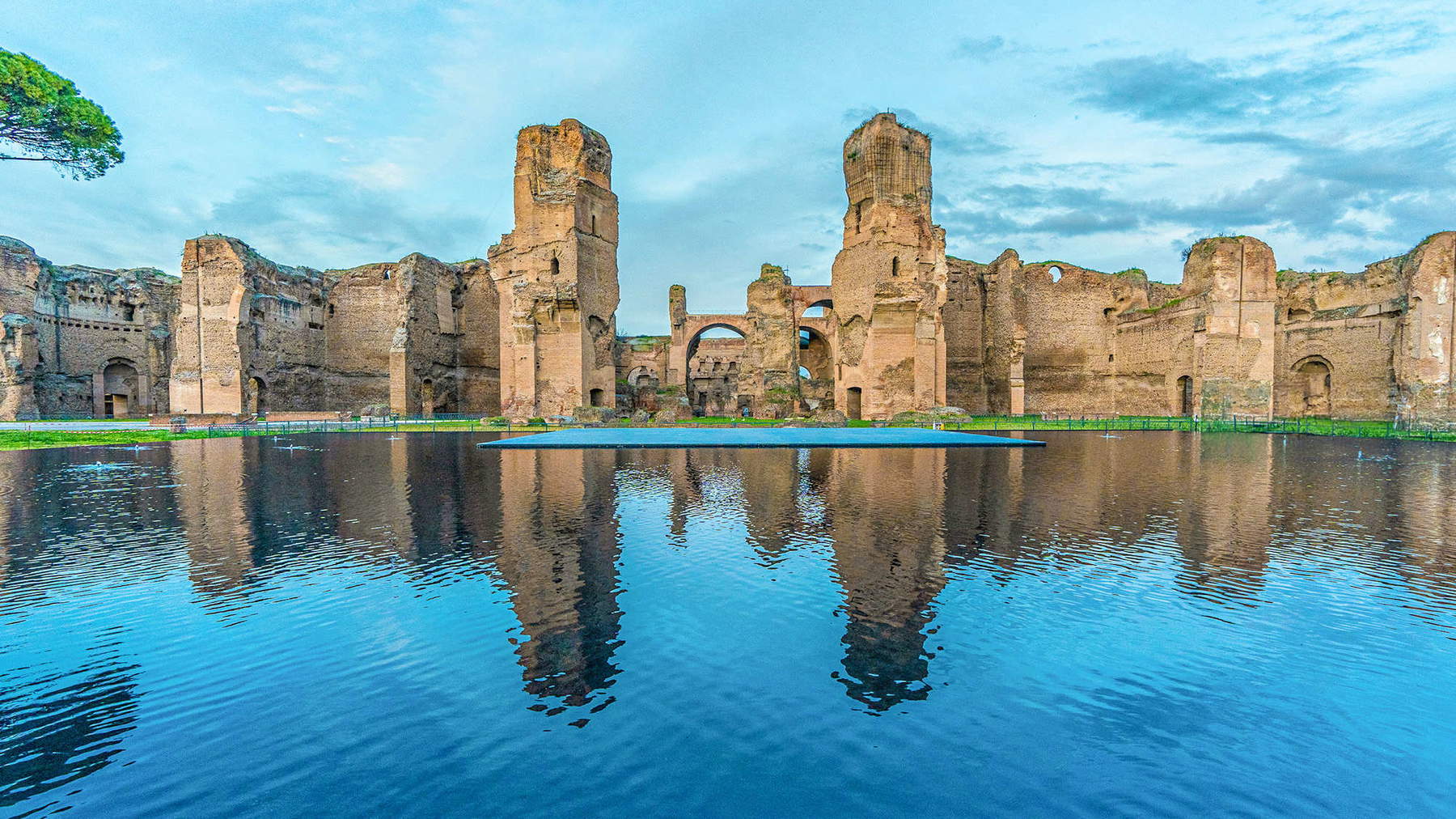
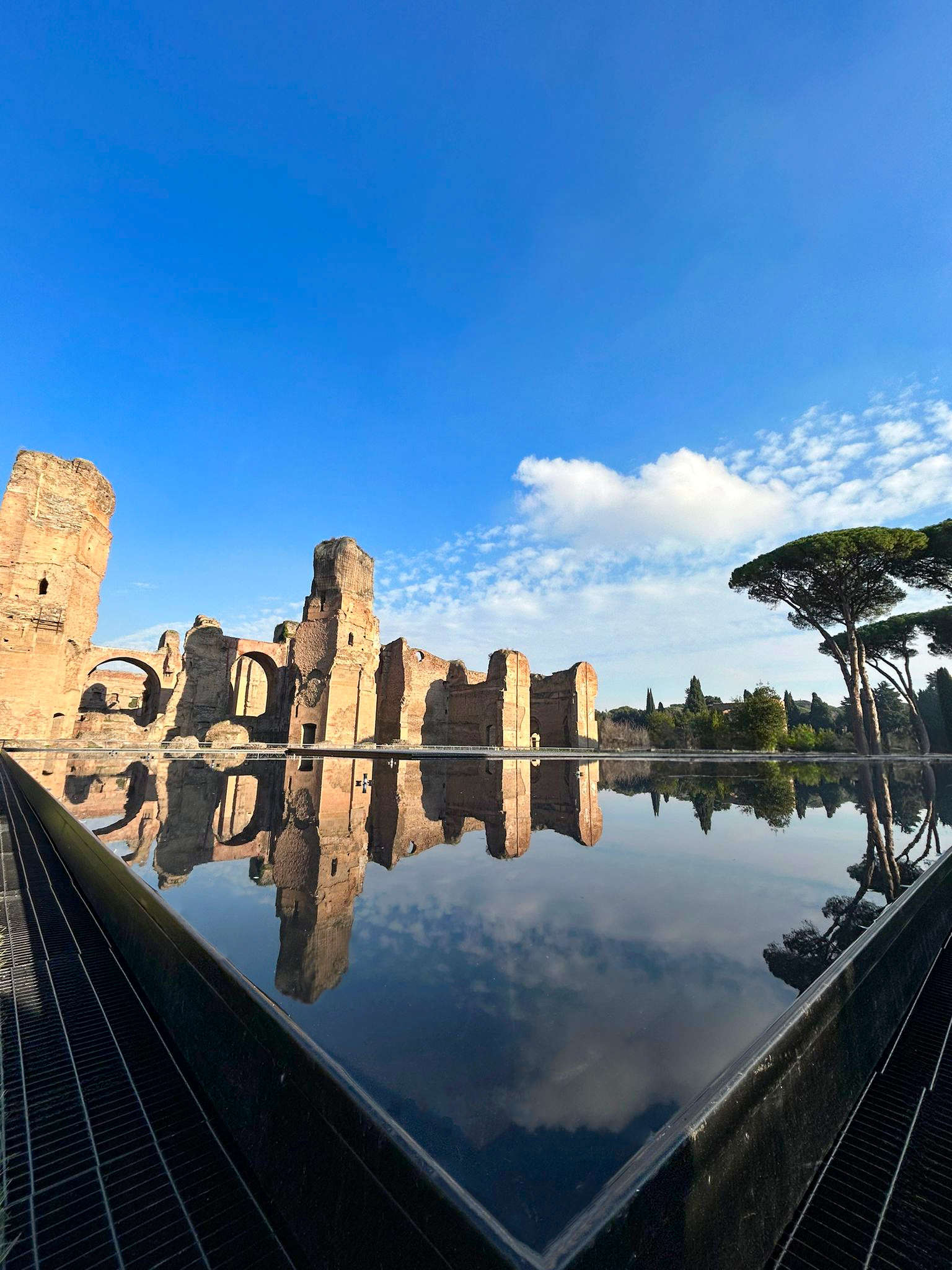

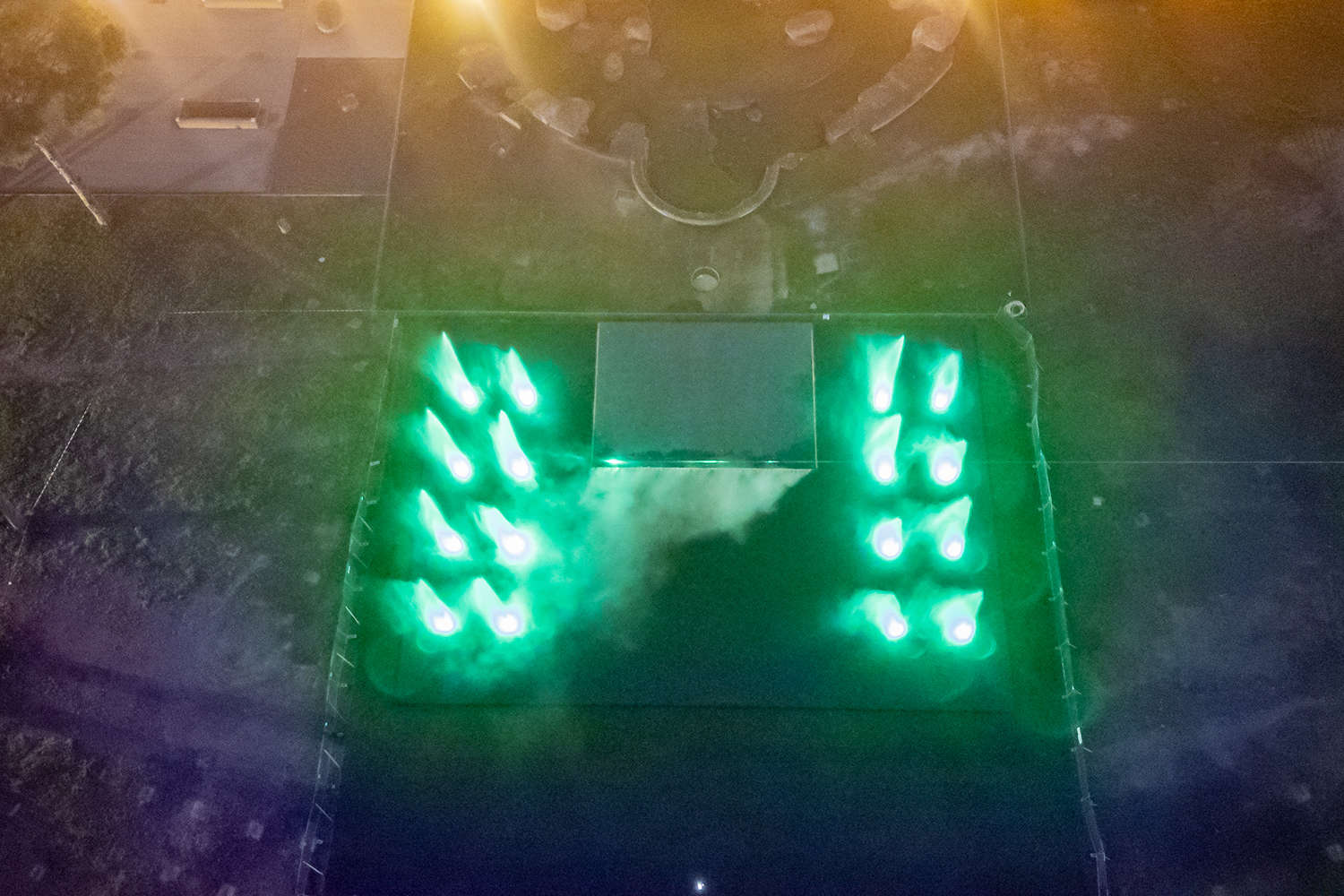
The history of the Baths of Caracalla in brief
The history of the Baths of Caracalla begins in 216 A.D., when the complex was inaugurated by Marcus Aurelius Antoninus Bassianus known as Caracalla, son of Septimius Severus: 9,000 workers a day were needed for the work to be completed, over a period of five years. In 235 AD they were probably completed: Heliogabalus and Severus Alexander, in fact, completed the Baths with porticoes and some decorations, after which Constantine modified the caldarium by inserting an apse. This is attested by an inscription still preserved in the basement. It was a complex that had an area of about 337 x 328 meters, extending over five levels, two floors in the elevation and three underground. The baths were fed by a derivation--built by Caracalla in 212 AD--of the Marcia water, which was enriched by the capture of new springs, and which took the name Nova Antoniniana water. The complex had 18 cisterns supplied all the building’s utilities, basins and fountains, 50 ovens that consumed 10 tons a day of lumber for heating and baking bread, 252 columns (that’s at least the estimated number), 16 of which were more than 12 meters high, 156 niches for statues, and accommodated, again according to estimates, about 6,000-8,000 visitors a day.
Beginning in 537 A.D., that is, after the siege of Vitiges, king of the Goths, the Baths wereabandoned due to the cutting of the aqueducts. As early as the 12th century, it appears that the Baths became a quarry for materials for the decoration of churches and palaces. Later, under Pope Paul III Farnese in 1545-1547, the spoliation of sculptures that ended up decorating his new palace took place. One example for all is the Farnese Bull, now in the National Archaeological Museum in Naples. Over time the area was certainly used for vineyards and vegetable gardens.
In 1824 systematic excavations began and continued throughout the century, until the early twentieth century when, having investigated the central body, the perimeter body and part of the basement were explored. Instead, the last summer opera season inside the caldarium dates back to 1993, after an occupation dating back to 1938 (in 2001 the summer opera season resumed, with a removable stage). The last discovery of statuary was in 1996: it was a headless statue of Artemis.
Since 2012, the Baths of Caracalla have opened up to contemporary art: that year Michelangelo Pistoletto executed and donated to the Superintendence the Third Paradise with finds from the Baths themselves, and in 2016 Pistoletto created The Reintegrated Apple, in Carrara marble, placed on permanent display in the center of the ancient guardhouse for the guardian-controller of the traffic of chariots, lumber and men engaged in running the complex machinery of the Baths. In 2017, the first contemporary art exhibition was held: on October 19, Molti, an exhibition by Antonio Biasiucci curated by Ludovico Pratesi, opened in the Terme’s basement. On December 24 of the same year, guided tours with viewers began: the Baths of Caracalla thus became the first major archaeological site covered in its entirety with immersive 3D reality. Again, June 13, 2018 saw the opening of Mauro Staccioli. Sensitive Environment, the first major retrospective on the Tuscan sculptor who died Jan. 1, 2018, while on Oct. 23 Omnia Flumina Romam Ducunt, an exhibition of sound architectures by Alvin Curran, opens. Dating back to 2019 is the restoration of a new section of the basement, which opened June 18 with Fabrizio Plessi’s exhibition Il segreto del tempo. On June 7, 2022, the intervention Ideas of Stone opens. Giuseppe Penone in Caracalla, while on June 23 the paintings of a luxurious domus from the Hadrianic age, partially destroyed to make way for the terracing of the baths, return to visit after more than 20 years. On June 26, 2023, there is the opening of the Letizia Battaglia photographic exhibition Senza fine, and on Nov. 24 that of the exhibition Calvino, sfida al labirinto.
 |
| Rome, water returns to the Baths of Caracalla after centuries. Inauguration of Hannes Peer's Mirror. |
Warning: the translation into English of the original Italian article was created using automatic tools. We undertake to review all articles, but we do not guarantee the total absence of inaccuracies in the translation due to the program. You can find the original by clicking on the ITA button. If you find any mistake,please contact us.





























